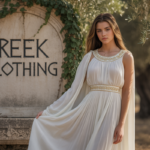Exploring the Origins and Evolution of Denim Shorts
In the realm of fashion, certain items transcend mere clothing to become cultural icons. One such piece is the humble yet versatile garment known as “jorts,” a portmanteau of “jeans” and “shorts.” Jorts have found their place in casual wardrobes worldwide, but who exactly created them, and how did they come to be?

Content
The Origins of Jorts
Jorts trace their origins back to the 1960s and 1970s, a period marked by the counterculture movement and the rise of denim as a symbol of rebellion and youth culture. As denim jeans gained popularity, especially among younger demographics, people began experimenting with cutting their jeans into shorter lengths to beat the summer heat while maintaining the rugged durability of denim.
Innovation and Adaptation
While the exact individual or brand responsible for first creating jorts remains unclear, their emergence can be attributed to a collective cultural shift towards more casual and DIY (do-it-yourself) fashion trends. This era saw a surge in personalization and customization of clothing, with denim enthusiasts taking scissors to their jeans to create shorts that suited their individual style and needs.
Cultural Significance
Jorts quickly became associated with a laid-back, effortless style, fitting perfectly into the ethos of casualwear that became increasingly popular from the 1980s onwards. They transcended gender boundaries, becoming a unisex fashion staple embraced by both men and women seeking comfort without sacrificing style.
Evolution in Fashion
Over the decades, jorts have evolved in style and construction. Early iterations were often simply cut-off jeans, frayed at the edges and with visible seams. As fashion trends evolved, designers began offering more refined versions, incorporating distressed finishes, different washes, and tailored fits to cater to diverse consumer preferences.
Popularity and Contemporary Appeal
In the 21st century, jorts continue to hold a significant place in casual fashion. They are worn for a variety of occasions, from beach outings and music festivals to everyday casual wear. Their versatility and durability make them a practical choice for many, reflecting a blend of fashion and function that resonates across generations.
Advertise With Us to showcase your brand on a leading fashion hub—reach trend-savvy audiences and boost your visibility today!
Conclusion
While the exact identity of the individual or brand who created jorts remains shrouded in the mystery of fashion history, their enduring appeal speaks volumes about their cultural significance and adaptability. From humble beginnings as DIY creations to becoming a mainstream wardrobe staple, jorts exemplify the evolution of fashion driven by comfort, style, and the spirit of individuality.
In essence, jorts are not just a piece of clothing but a testament to the creativity and innovation that define the ever-changing landscape of fashion. As trends come and go, jorts remain a timeless reminder of how a simple idea can leave an indelible mark on the world of style.

Theresa Smith is an experienced fashion blogger. She has been blogging for nearly 10 years, and her blog posts are often featured in major publications. Her blog posts cover everything from the latest trends to tips on how to wear certain pieces of clothing. Theresa’s favorite style icons include Audrey Hepburn and Michelle Obama, who she cites as having great style.












